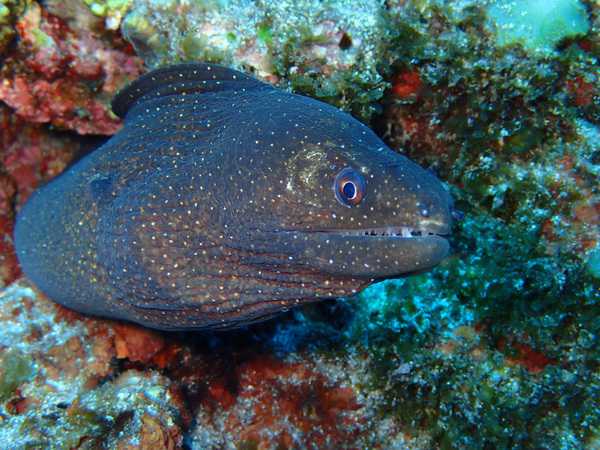One benefit of seing a giant moray (Gymnothorax javanicus) and any moray (Mureanidae) actually, at the hunt is that they are swimming in open water. If a moray could be considered ugly by some divers when it is just getting sheltered on the rocks or under corals, it is actually pretty graceful when swimming, ondulating like snake would do but in plain water.
Giant moray is more likely to be a night hunter. So when you go on a night dive over the Liberty shipwreck in Tulamben you have a high chance to observe this majesty in action. You might not expect it but morays are quick when it comes to get a prey!
A funny fact about morays as well, not only the giant one, is that they hunt in cooperation with other species like groupers (Epinephelinae) or Emperor fish (Lethrinidae) and some time on a threesome hunt ! They combine their skills to break cover of their common prey and give each of them more chance to get food.
What really matters for this cooperation is the size of the fish they are hunting, so a relatively small moray will swim along a medium grouper and a bigger Emperor, the three of them targeting the same fish. It tries to hide into the reef ? The moray flush it while the budy(ies) is waiting on top to lock the trap. And so the feast begins !
On a night dive they sometimes use you as a collaborator as well. Morays, groupers, even Lionfish are gently folowing you as you enlight their prey and make it easier for them to aim and strike.
You’re looking at this tiny lovely fish and so a massive marbled grouper (Dermatolepis inermis) shows up and sucks it all within a second. It left you a bit surprised but this shows how adaptable life is in terms of strategy and how quick some species can take advantage of a new element in their environment, we scuba divers.
Two Fish Divers amed are waiting you to explore beautiful underwater life in Amed !







